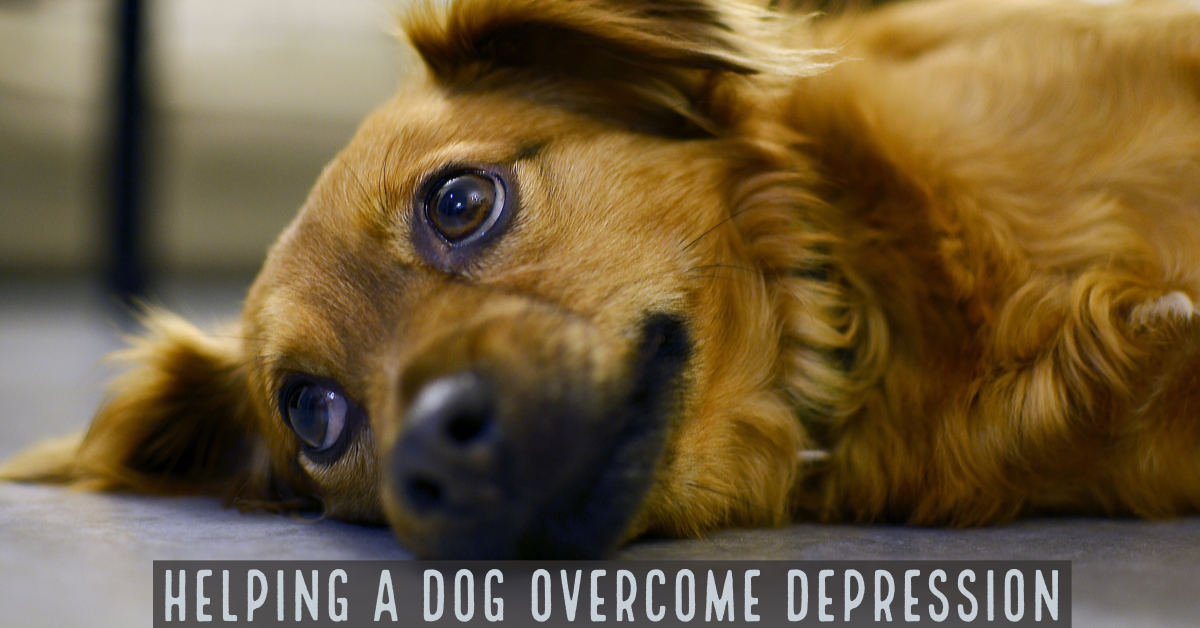Decoding Signs of Canine Depression and What to Do
Dogs, known for their boundless energy and unwavering loyalty, are not immune to mental health issues. While many may associate depression with humans, it’s important to acknowledge that dogs can also experience this emotional state. Understanding the signs of canine depression and knowing how to diagnose it is crucial for responsible pet ownership.
Brozlex will explore the signs that indicate a dog might be suffering from depression, the possible causes, and how to go about diagnosing and addressing this condition.
Signs of Canine Depression
- Changes in Behavior: One of the most noticeable signs of canine depression is a shift in behavior. If your dog is usually active and playful but suddenly becomes lethargic, withdrawn, or uninterested in activities they used to enjoy, it could be a cause for concern.
- Appetite Changes: Depression can also manifest in changes to a dog’s eating habits. This may include a loss of appetite leading to weight loss or, conversely, an increase in eating as a form of comfort.
- Sleep Pattern Alterations: Dogs generally have consistent sleep patterns. Depressed dogs may sleep more than usual, or conversely, struggle with insomnia.
- Social Withdrawal: If your dog starts to avoid social interactions with both humans and other animals, this could be a sign of depression. Dogs are naturally social creatures, so a sudden disinterest in companionship is a red flag.
- Excessive Licking or Chewing: Dogs may resort to self-soothing behaviors when depressed, such as excessive licking, chewing, or even self-harm. Pay attention to changes in grooming habits.
Causes of Canine Depression
- Loss of a Companion: Dogs form strong bonds with their human and animal companions. The loss of a family member, whether it’s a fellow pet or a human, can trigger depression in dogs.
- Changes in Environment: Moving to a new home, a change in routine, or being introduced to a new family member can be stressful for dogs and contribute to depression.
- Medical Conditions: Some medical conditions, such as chronic pain or hormonal imbalances, can lead to depressive symptoms in dogs. It’s essential to rule out underlying health issues through a thorough veterinary examination.
Diagnosing Canine Depression
- Veterinary Evaluation: If you suspect your dog is depressed, the first step is to consult with a veterinarian. A professional examination can rule out medical issues and help determine if the behavior changes are due to emotional distress.
- Behavioral Assessment: Veterinarians may employ behavioral assessments to gauge a dog’s overall well-being. Observing the dog’s reactions in various situations can provide insights into their mental state.
- Blood Tests and Imaging: In some cases, blood tests and imaging may be necessary to rule out physiological causes for the observed behavior changes.
Treatment and Support
- Create a Stable Environment: Provide a stable and predictable environment for your dog. Stick to a consistent routine to help them feel secure.
- Engage in Play and Exercise: Encourage play and exercise to stimulate the release of endorphins, promoting a positive mood.
- Social Interaction: Spend quality time with your dog and engage in activities that strengthen your bond. Social interaction is crucial for their emotional well-being.
- Professional Help: In severe cases, a veterinarian may recommend consulting with a professional animal behaviorist or prescribing medication to alleviate symptoms.
Recognizing and addressing canine depression is vital for the well-being of our four-legged friends. By understanding the signs, causes, and diagnostic processes, pet owners can take proactive steps to ensure their dogs lead happy and healthy lives. Regular veterinary check-ups, a supportive environment, and responsive care can make a significant difference in helping a depressed dog recover and thrive.


